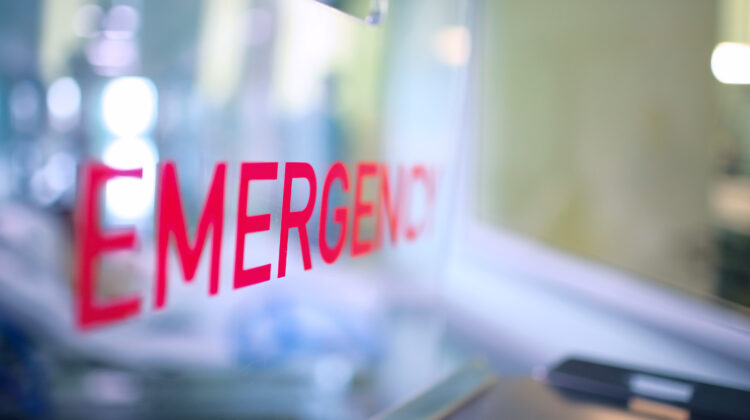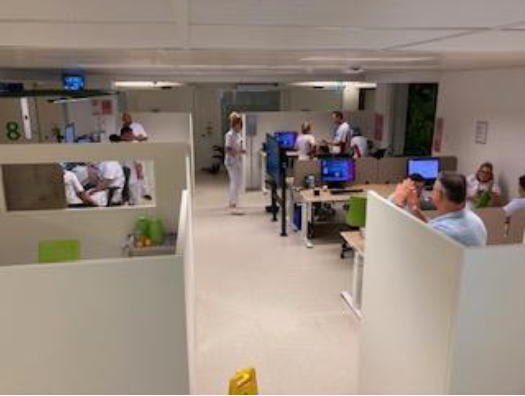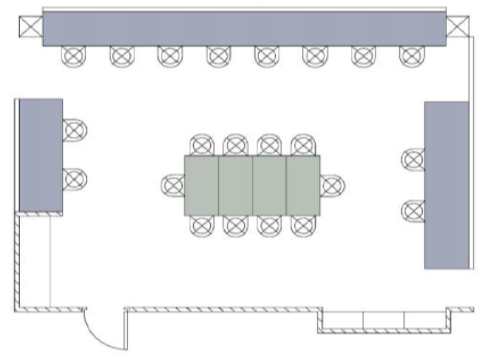
Department redesign at Jeroen Bosch Hospital
I had the privilege of kicking off the INTER-NOISE 2024 conference with the first presentation on Monday morning at 8:00 AM. Despite the early hour, the room was filled with fellow acoustics enthusiasts eager to delve into the pressing issue of noise in healthcare and Emergency department settings. My presentation focused on our follow-up study to “Alarming Sound: A Case Study of Noise in an Emergency Department,” where we explored the impact of architectural redesigns on noise levels and staff well-being in the Emergency Department (ED) of the Jeroen Bosch Hospital (JBZ) in Den Bosch, Netherlands.

The Challenge of Noise in Emergency Departments
Emergency Departments are inherently noisy environments. The constant influx of patients, the beeping of medical devices, and the bustle of healthcare professionals all contribute to elevated noise levels. Previous research has shown that such noise can significantly impact the cognitive functions of healthcare workers, affecting their attention, memory, and overall job performance.
In our initial study, we identified critical noise issues within the ED’s central area. The layout (Figure 1) contributed to reverberation and poor acoustics, which not only hindered communication among staff but also added to their stress levels.

Architectural Interventions for Noise Reduction
In collaboration with the hospital’s management and staff, a series of architectural changes were implemented, aimed at mitigating noise and enhancing communication:
- Installation of High Panels: JBZ strategically placed 1.70-meter-high panels in high-noise areas such as triage and reception to reduce reverberation and ambient noise.
- Workspace Reconfiguration: The central workstations were redesigned to create more enclosed spaces, using barriers that block sound transmission while maintaining necessary sight lines for patient care.
- Optimizing Traffic Flow: Adjustments to the layout directed foot traffic away from concentrated work areas, reducing disturbances caused by movement and conversations.
Methodology of the Follow-up Study
To evaluate the effectiveness of these interventions, we employed a mixed-methods approach:
- Surveys and Focus Groups: We gathered feedback from a diverse group of 102 healthcare professionals, including doctors, nurses, and support staff. Through surveys and focus group discussions, we assessed changes in staff perceptions of noise, communication efficiency, and overall workplace satisfaction.
- Observational Studies: By observing staff interactions and movement patterns during peak hours, we analyzed the impact of the redesign on workflow efficiency.
Initial Findings and Staff Feedback
While the post-intervention data collection is still underway, early indications are promising. Staff members have reported a noticeable reduction in noise disturbances. Some have mentioned that the quieter environment has made it easier to concentrate, communicate, and perform tasks efficiently.
One nurse shared, “I feel less drained at the end of my shift. The reduced noise makes a big difference in how we work and interact with patients.”
Looking ahead
Our study aims to provide evidence-based insights into how physical workspace modifications can enhance the functionality and well-being of healthcare environments. The integration of quantitative data with qualitative feedback will offer a comprehensive understanding of the impact of our interventions.
We anticipate that the final results will contribute valuable knowledge to the field of environmental design in healthcare settings, offering practical recommendations for future ergonomic improvements.
Acknowledgements
I would like to extend my sincere gratitude to the management and staff of Jeroen Bosch Hospital for their cooperation and commitment to improving the well-being of healthcare workers. Special thanks to Eindhoven University of Technology, particularly Ir. Maud Dohmen and Prof. Dr. Ir. Maarten Hornikx, for their invaluable contributions to the acoustic measurements and analysis.
References:
- Choiniere, D. B. (2010). The effects of hospital noise. Nursing Administration Quarterly, 34(4), 327-333.
- Reinten, J. (2020). Exploring the effect of the sound environment on nurses’ task performance. Technische Universiteit Eindhoven.
- Van Wezel, C., & Veen, J. (2023). Alarming sound: A case study on noise in an emergency ward. Presented at Forum Acusticum 2023.
Cees van Wezel, Concept Developer Healthcare, Saint-Gobain Ecophon Netherlands
More healthcare presentations from Internoise 2024

